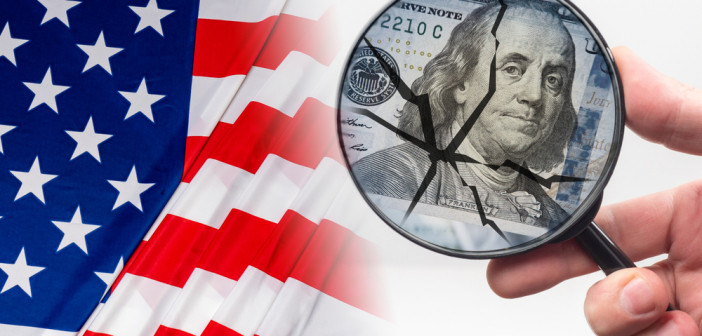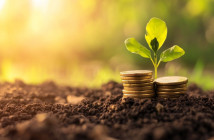Over the past year, inflation in the United States has tumbled from 9% all the way to 3%, softening most of the price pressures that have gripped the nation for more than two years.
Now comes the hard part.
Squeezing out the last bit of excess inflation and reducing it to the Federal Reserve’s 2% target rate is expected to be a much harder and slower grind.
A measure called “core” inflation, which excludes volatile food and energy prices, is even higher than overall inflation. It, too, seems likely to slow only gradually. The Fed pays particular attention to core prices as a signal of where inflation might be headed. In June, core prices were up 4.1% from a year earlier, according to the Fed’s preferred gauge.
“We see some challenges in getting that all the way back to 2% quickly,” said Michael Hanson, senior global economist at J.P. Morgan.
The stickiness of inflation could endanger the possibility that the Fed will achieve a rare “soft landing” — a scenario in which it manages to slow inflation down to its target level through higher interest rates without derailing the economy. If inflation were to remain elevated for too long, the Fed might feel compelled to further raise its key rate from its current 5.4%, a 22-year high. Most economists say they think the central bank is done hiking, but only if inflation continues to cool.
At the same time, the Fed has acknowledged that inflation pressures have eased significantly over the past year. Encouragingly, that slowdown has occurred even while the economy has continued to expand and employers have steadily hired at a healthy pace.
On Thursday, when the government will issue inflation data for July, economists expect it to show a slight pickup in year-over-year inflation to 3.3%. It would be the first such increase after 12 months of declines.
In part, any rebound in annual inflation for July will reflect higher gas prices. Unless they ease, gas prices could keep overall inflation above 3% through the end of the year. The national average pump price has jumped about 30 cents, to $3.83, in the past month, partly because the cost of oil has risen.
One obstacle in bringing inflation down to the Fed’s 2% target is that the price slowdown so far has reflected mainly relatively painless changes not likely to be repeated. Until last month, for example, gas prices had already plunged from a peak national average of $5. And supply-chain snarls that had swollen the prices of cars, furniture, appliances and other physical goods have mostly unwound. The cost of long-lasting manufactured goods actually declined slightly in June from a year ago.
Another factor is that prices had soared in the first half of 2022 before slowing in the second half. So any increase in July would have the effect of boosting the year-over-year inflation rate.
What’s now sending prices up is mostly the cost of services — everything from dental care and auto insurance to restaurant meals and summer concerts. Those costs mostly reflect healthy wage gains for workers, which are often passed on to customers in the form of higher prices.
“Energy prices are off, commodity prices off, core goods fell,” said Kristin Forbes, an economist at MIT and a former member of the Bank of England’s interest-rate setting committee. “That’s the quick, easy stuff. What’s left is this underlying wage-service inflation. And that’s the part that’s harder to slow down and will take take longer.”
Many employees, especially in the economy’s service sector, could push for further raises in the coming months. With labor shortages still a problem for service industries, workers have leverage to demand higher pay. For most Americans, pay gains have trailed inflation over the past two years.
Higher pay is one key issue driving strikes among Hollywood writers and actors. It was also a focus of the Teamsters union in its negotiations with UPS, which led to large pay gains. The United Auto Workers is also pushing for robust raises in its talks with U.S. automakers.
Hanson, of J.P. Morgan, notes that measures of health insurance costs will start to rise this fall because of quirks in how the government measures them. And auto insurance and repair costs have been surging. A key reason is that vehicle prices soared after parts shortages developed when the pandemic erupted; costlier cars are more expensive to fix and insure. Auto insurance prices have soared nearly 17% in the past year.
As a result, economists generally expect core prices, under the Fed’s preferred measure, to still rise at a 3.5% annual pace by year’s end — far above its 2% target. The Fed’s latest forecasts show that its policymakers expect core inflation to still be 2.6% at the end of 2024.
Still, there are some hopeful signs that hiring and wages are slowing, which would cool inflation over time. On Friday, the government reported that employers added 187,000 jobs in July, a solid total but still reflective of a slowdown: Job growth over the past three months has averaged only about half the pace of the same period in 2022. And wage growth slipped to 4.6% in the April-June quarter, the government said, the slowest pace in a year and a half.
“That trajectory tells us where things will go in the next 12 months,” said Skanda Amarnath, executive director of Employ America, an advocacy group.
At his most recent news conference, Fed Chair Jerome Powell sounded some cautious but hopeful notes about the prospect of a soft landing.
“I wouldn’t use the term optimism about this yet,” he said. “I would say though that there’s a pathway….We’ve seen so far the beginnings of disinflation without any real costs in the labor market. And that’s a really good thing.”
Yet a defining characteristic of the post-pandemic economy has been resilience, with consumers in particular showing a surprisingly persistent willingness to spend. Some economists worry that it will take a sharp rise in unemployment to reverse that trend and finally conquer inflation.
The Fed has already been coming under some criticism for sharply raising rates and potentially putting the job market at risk. Sen. Elizabeth Warren, a Massachusetts Democrat, wrote Powell before the Fed met last month and urged him to forgo another rate increase. The central bank, though, went ahead with its 11th rate hike since March 2022.
“The Fed’s aggressive rate hikes disproportionately threaten Black workers and their families and risk fully reversing the extraordinary labor market gains we have seen,” Warren, a frequent Fed critic, wrote.
With political pressure on the Fed rising, Powell and other officials may soon see the precipitous drop in inflation in the first half of this year as having been the easy part.
“The Fed has got lucky so far in what it’s gotten,” said Steven Blitz, chief U.S. economist at GlobalData TS Lombard. “Most of the decline in inflation was going to happen anyway. They really own the part that’s to come.”




